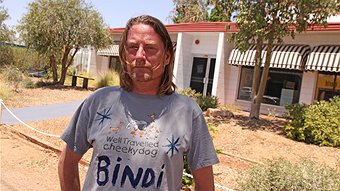Home
About Us
|
|
by: Ken Goldstein
As a professional grant writer and consultant, I am often amazed at how few nonprofit organizations actually have a fund development plan beyond a vague idea of applying for a few grants and sending out an annual appeal letter.
Recognizing that lack of planning, I am not amazed at how often these same organizations have rounds of emergency budget cuts when they realize that they have no assured streams of income.
Very typical is the agency that has received a large grant to run their programs for one year. Then, in the tenth month of the grant period, comes the realization that they have no idea how they will fund the next year's programs. With less than two months of money left in the bank they go into emergency fundraising mode.
Their first impulse is to start applying for another large grant. But at most foundations, the process - from letter of inquiry to proposal to acceptance - typically takes at least three months, and often six to eight months.
Their next idea is to turn to their individual donors with a panicked letter that essentially says, "Send us money now or we might go out of business." That, of course, is the least effective fundraising letter you can write. Donors want to invest in your successes, not bail out your failures.
So, how do they avoid these situations? The answer is to plan.
Through the planning process, you will achieve the following:
* Limit crisis fundraising: This, as the example above illustrates, is our primary reason for creating a fund development plan, but there are others as well...
* Diversity builds in flexibility: Changes in other sectors of the economy can have a major impact on nonprofit funding. A cut in the state budget can be passed down as fewer contracts for local service organizations. The dot-com bust of a few years back cut foundation endowments, reducing the funds they had available to grant. Agencies that had become comfortable relying on one or two sources of funding found themselves struggling to survive these changes. Those with plans and diversified funding bases had the flexibility to adapt and survive.
* Planning for diversity brings in more opportunities: Through the planning process you come to identify funding opportunities you never knew existed. Further, when you stop having to scramble to pay next month's bills, you will be able to devote more time to developing new sources of income for your agency.
(continued...)
Fundraising Planning - A Vital Key to Nonprofit Success
Page 2
About The Author
Ken Goldstein is a grant writer and consultant working and living in Silicon Valley. Since 1989 he has been an executive director, a board member, volunteer, and consultant to nonprofits. His education includes a BA in Politics from UC Santa Cruz and a Master of Public Policy and Administration from CSU Sacramento. Goldstein Consulting can be found at http://www.goldsteinconsulting.com. Ken is also the author of "Introduction to Fund Development Planning" - Please see http://www.fundraisingplanbook.com for more information. (c) 2006 by Ken Goldstein, all rights reserved. You may re-print or re-post this article only complete and un-edited, and including the author information, active web links, and copyright notice.
|
Additional Resources
category - Grants for Nonprofits
Department of Housing and Urban Development: Continuum of Care Homeless Assistance Programs
HRSA: Reducing Loss to Follow-up after Failure to Pass Newborn Hearing Screening
Research Opportunities In Space and Earth Sciences (ROSES) 2011
Department of Homeland Security: 2011 Earthquake Technology Transfer
Follow @topgovtgrant
Social Entrepreneurship
Spotlight
Raised Concerns for Future of Long-Serving Social Enterprise

Employees have raised concerns over the future of disability support organization Bindi, following four staff layoffs that were just recently announced.
